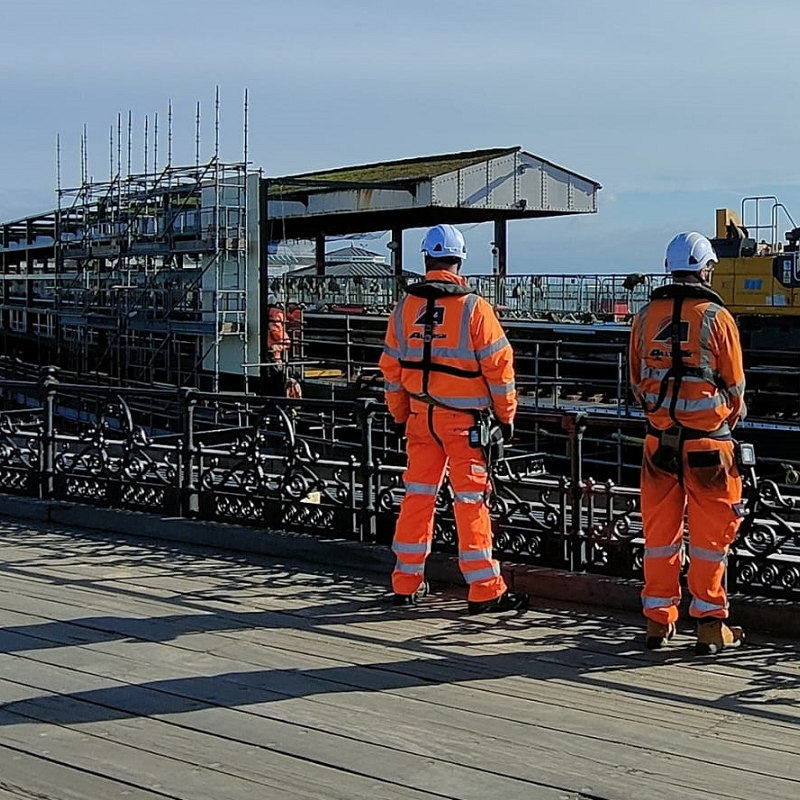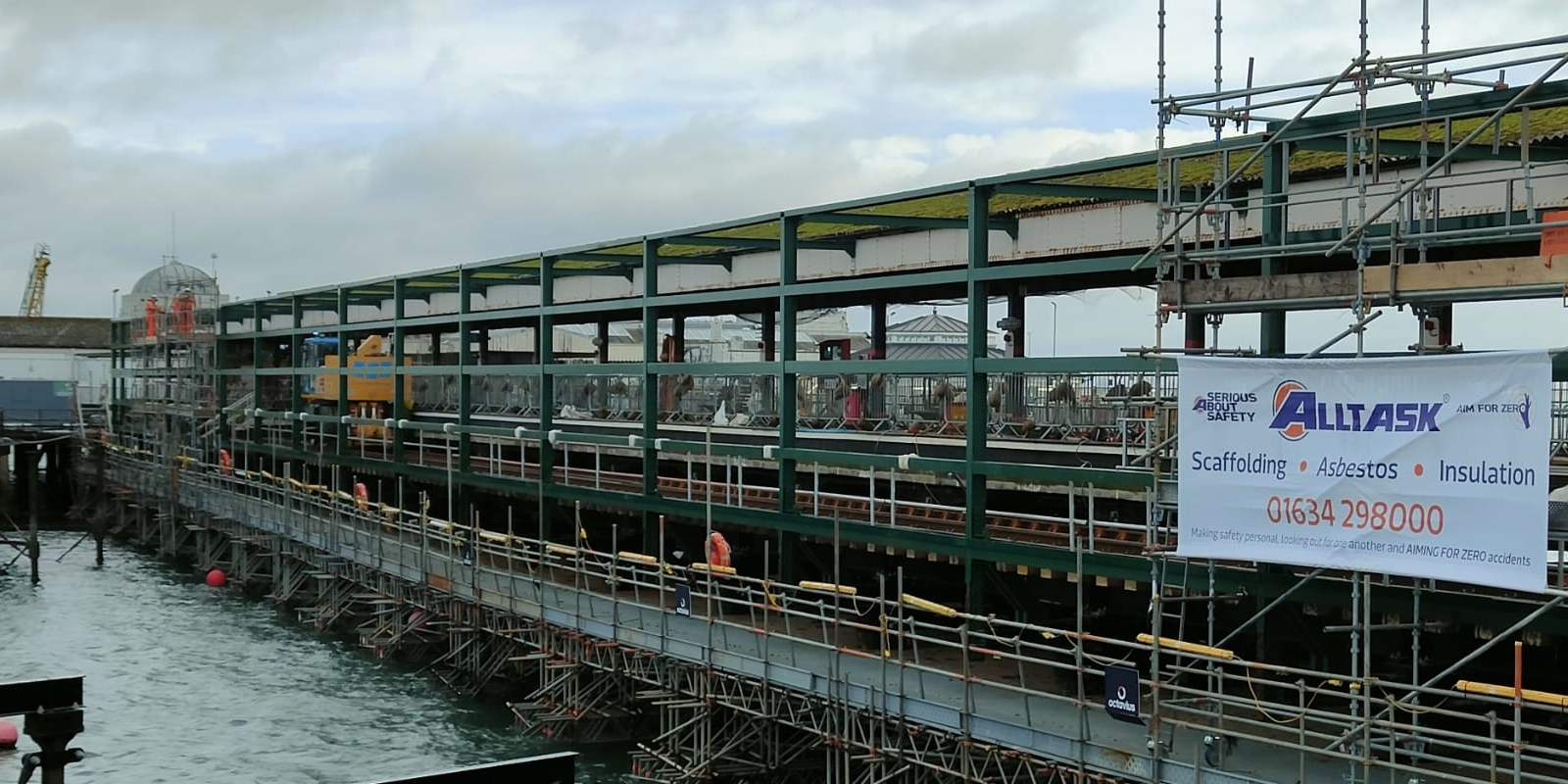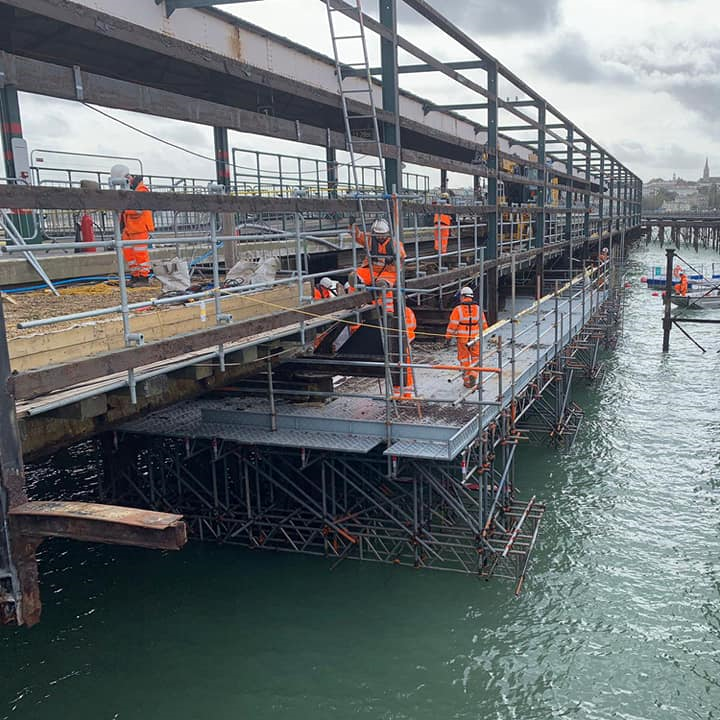
Grade II Listed Pier
In late 2022 and the first quarter of 2023, major maintenance work started on the Isle of Wight’s historic Ryde Pier.
The 600+ metre long, Grade II listed pier is over 200 years old and provides a major link between the Isle of Wight and the English mainland via the ferry service which docks there. A train line then carries passengers from the pier to the Ryde Esplanade.
Over the years, the pier and the train line have become battered by the harsh environmental weather conditions which were thrown at them by the strong tidal waters of The Solent. As a result, a series of repairs, maintenance, strengthening and refurbishments are desperately needed.
A line closure from Ryde Pier Head to Ryde Esplanade has been put in place to allow engineers to work on the historic structure giving it an extended lifespan of up to 60 years. On top of the repairs and refurbishments of the pier, South Western Railway (SWR) are also using the line closure to carry out work on the train line.
In order for the works to be carried out, scaffolding structures are required which are sited on pontoons that are strong enough to safely allow the engineers to work in the harsh marine conditions.
Alltask was asked by our client, Octavius Infrastructure to provide purpose-built suspended access and protection scaffolding for the refurbishment and strengthening works which was designed by PSD. The Pontoons and safety boats are provided by Rebel Marine who work alongside us to facilitate safe access to carry out the scaffolding work.

Safety First
The nature of this project dictates that safety is paramount. Therefore, whenever the weather conditions are too dangerous to carry on with the repairs, work ceases until it is safe to resume. In addition, all team members are required to wear buoyancy aids.
The extreme weather conditions associated with working on the sea mean that the environment has to be monitored extremely carefully. The pontoons could quickly become unsafe should there be a tidal swell. So, in addition to checking weather conditions, a safety boat team are on-hand to assist where necessary.
Clear segregated working areas which separate the workforce from the general public are also marked out to minimise the risks and daily briefings are given which reinforce the risks and limitations of the site, as well ensuring workers benefit from any important health and safety information.
This safe method of working very much reflects Alltask’s ‘Aim for Zero’ safety campaign which strives for zero workplace injuries and supports the promotion of Alltask Black Hats - a nominated operative who has full autonomy to measure, minimise and control hazards in the workplace.
The Railway Structure
The railway structure of the pier was built between 1878 and 1880. Its platforms are owned by Network Rail and the line is leased to South Western Railway (SWR).
In 1962 the pier was strengthened with new steelwork and in 2012 and 2013 it underwent emergency repairs. In 2016 a study recommended that it be repaired and refurbished to continue to support Island Line services for a further 60 years.
The Victorian-era design and construction of the Pier, which is split into six different ‘zones’ with five different designs, makes it difficult to maintain. Engineers needed to use a variety of different methods to strengthen and repair the pier, with a combination of both partial replacements and full refurbishments of the metal and timber structure. This took a significant amount of time.

Simon Coates commented - “Ensuring the complete safety of the workforce is vital throughout this project and the Alltask team is more than up to the job. We enjoy the challenge of making sure the scaffolding and pontoons are completely safe while working out on the sea, in tough weather conditions, often seeing tidal swells which could sometimes be as high as 3 metres tall.”
